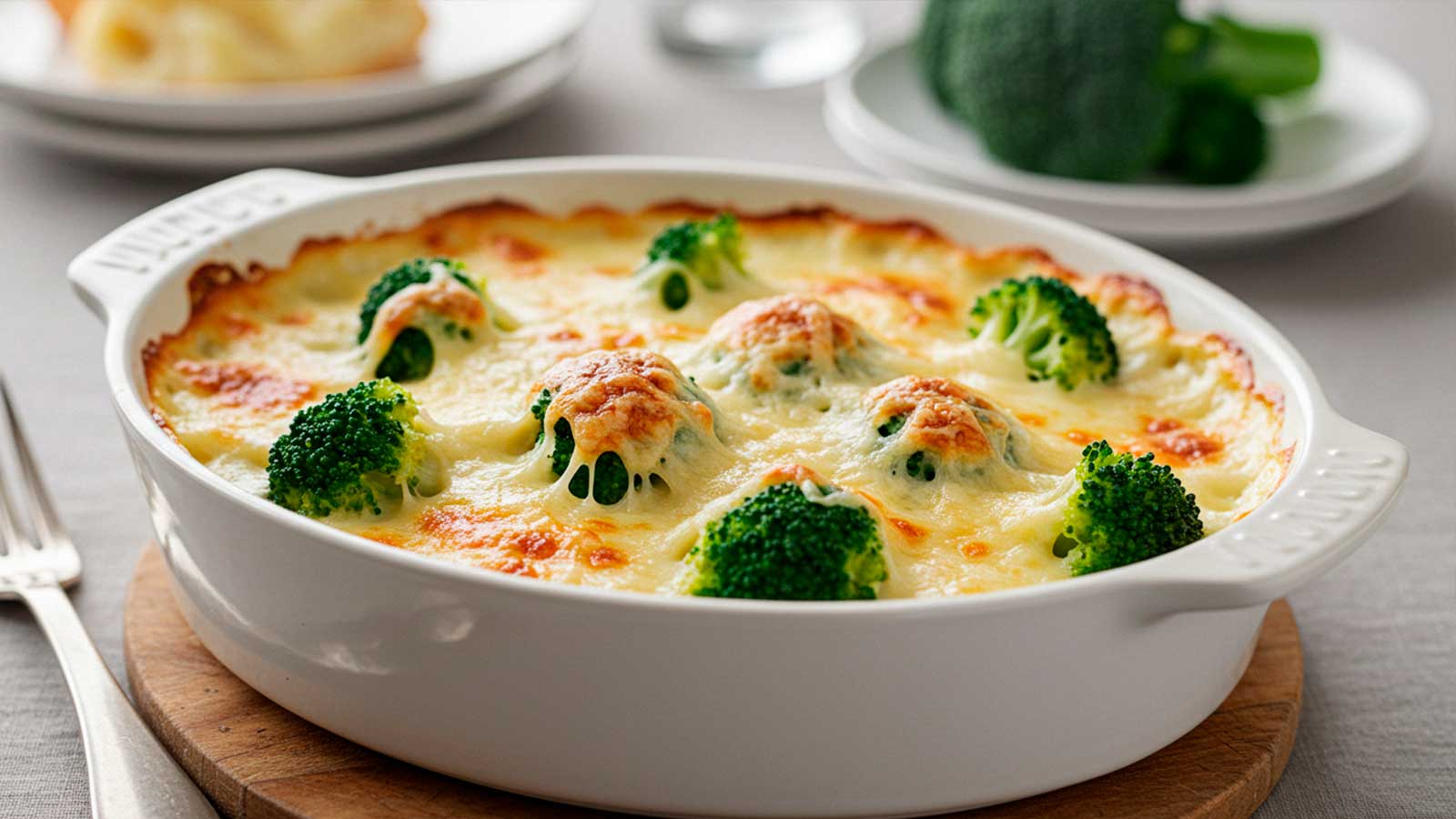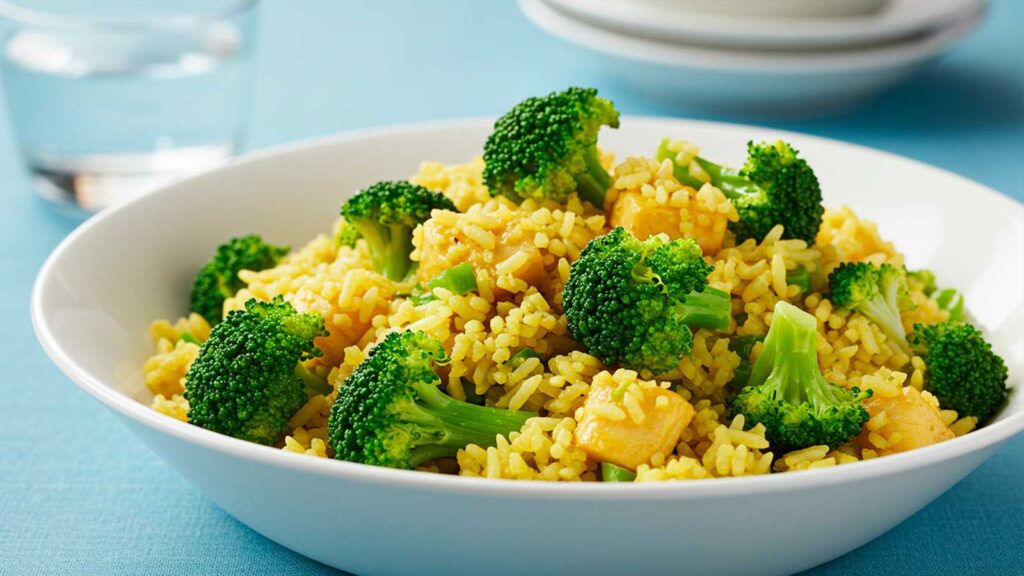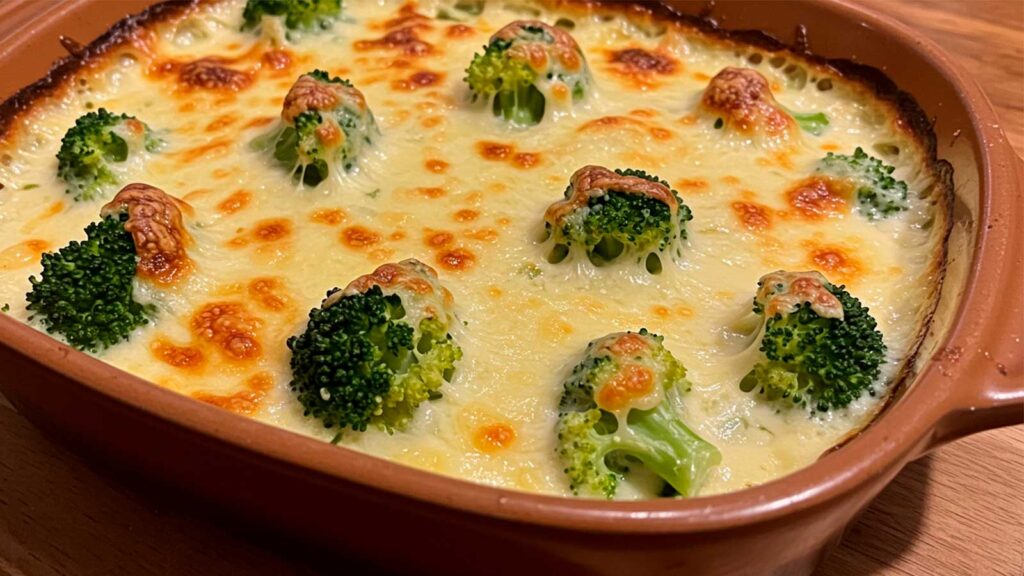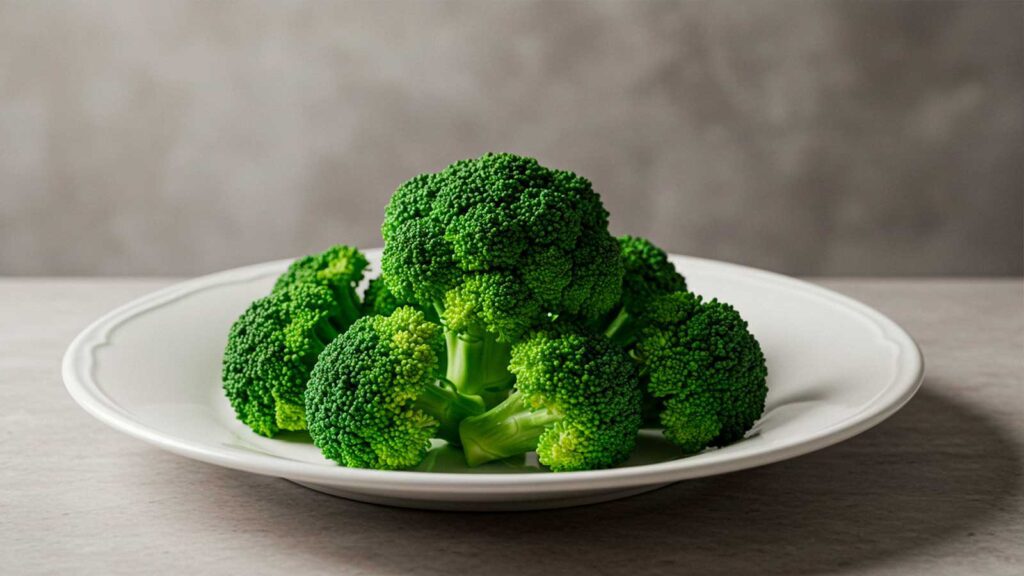Broccoli is a vegetable known for its versatility, distinct flavor, and frequent presence in everyday meals. Whether steamed, sautéed, in soups, salads, or casseroles, it stands out for both its taste and its unique texture.
In this article, we will explore everything about broccoli, from its origins to preparation tips, storage methods, and culinary pairings that bring out the best of this ingredient.
The Origin and Popularization of Broccoli
Broccoli originated in the Mediterranean region, especially Italy. Its name derives from the Latin “bracchium,” meaning arm or branch, in reference to the vegetable’s shape. Over time, it spread worldwide, being widely cultivated in Europe, North America, and, more recently, Brazil.
Today, broccoli is considered an essential culinary ingredient thanks to its ability to enrich simple dishes with aroma, color, and texture.

Types of Broccoli: What’s the Difference?
There are different varieties of broccoli, but the two most common are:
Broccoli “Ninja”
Also known as American broccoli, it has a single, compact head with thick stalks. It’s the most popular in supermarkets and ideal for dishes such as casseroles and roasts.
Sprouting Broccoli
More common in farmers’ markets, it has loose florets and green leaves. Its flavor is slightly more bitter, making it excellent for stir-fries or as a pasta side.
How to Prepare Broccoli the Right Way
Proper Cleaning
Rinse the broccoli florets under running water and soak for 10 minutes in a solution of water and vinegar or baking soda. This helps remove residue and any insects hidden between the florets.
Cooking Techniques
- Steamed: best preserves the broccoli’s texture and flavor.
- Boiled: ideal for milder recipes, but watch the timing so it doesn’t overcook.
- Sautéed: perfect for enhancing flavor with garlic and olive oil.
- Roasted: a great option if you enjoy a lightly charred touch.
Culinary Pairings with Broccoli
Broccoli pairs well with ingredients that balance its pronounced flavor. Here are a few ideas:
Pasta
Adding sautéed broccoli to pasta recipes with cream sauce or garlic-and-oil creates a delicious, nutritious dish.
Rice
Rice with broccoli is a simple yet aromatic recipe. The vegetable can be finely chopped and mixed into cooked rice or sautéed with the garlic.
Pies and Soufflés
Incorporating broccoli into pie or soufflé batters adds texture and vibrant color to the dish.
Vegetables and Eggs
Mixing broccoli into scrambled eggs or omelets is a quick way to create light, practical meals.

How to Store Broccoli Properly
Fresh Broccoli
Keep fresh broccoli in the crisper drawer of the fridge, in a perforated plastic bag or lidded container. It can last 4–7 days.
Frozen Broccoli
Broccoli can be frozen after a 2- to 3-minute blanch. Drain and dry well, then store in freezer-safe bags for up to 3 months.
Tips to Use Every Part of Broccoli
Often only the florets are used, but the stalks and leaves are excellent ingredients too. Here’s how to use them:
Stalks
Slice thinly and add to stir-fries or soups. They have a milder flavor and crunchy texture.
Leaves
Broccoli leaves can be prepared like kale: sautéed with garlic and olive oil, or added to savory pies.
Simple Broccoli Recipes
Garlic-and-Oil Broccoli
Ingredients:
- 1 head of broccoli (Ninja or sprouting)
- 3 cloves of garlic, thinly sliced
- 2 tablespoons extra-virgin olive oil
- Salt and black pepper to taste
- Squeeze of lemon (optional)
Method:
- Separate the broccoli florets and wash well.
- Steam for 3–4 minutes until slightly tender yet vibrant green.
- In a large skillet, heat the olive oil and gently brown the garlic over low heat (avoid burning).
- Add the steamed broccoli and sauté for 2 minutes, stirring gently to coat with garlic flavor.
- Season with salt, pepper, and a squeeze of lemon if you like a citrus touch.
Tip: Serve as a side for grilled meats or simple pasta dishes.
Creamy Broccoli Gratin
Ingredients:
- 1 head of broccoli, cut into florets
- 1 tablespoon butter
- 1 tablespoon all-purpose flour
- 1 cup milk
- 1/2 cup heavy cream (optional, for extra creaminess)
- 1/2 cup shredded mozzarella
- 2 tablespoons grated Parmesan
- Salt, nutmeg, and black pepper to taste
Method:
- Boil the broccoli florets in salted water for 2 minutes. Drain and set aside.
- In a saucepan, melt the butter and add the flour, stirring to form a light roux.
- Gradually pour in the milk, whisking until smooth. Add cream, salt, nutmeg, and pepper to taste.
- Place the broccoli in a greased baking dish and cover with the sauce.
- Sprinkle with the cheeses and bake in a preheated oven (200 °C / 390 °F) for about 20 minutes, or until golden.
Tip: Add shredded chicken or diced ham to turn it into a main dish.
Sautéed Broccoli Rice
Ingredients:
- 2 cups cooked white rice
- 1 head of broccoli, chopped (stalks and florets)
- 2 tablespoons olive oil
- 2 cloves garlic, minced
- Salt and pepper to taste
Method:
- In a deep pan or skillet, heat the olive oil and sauté the garlic until golden.
- Add the chopped broccoli and cook until the stalks soften and the florets are lightly toasted.
- Add the cooked rice and mix well, adjusting salt and pepper.
- Serve hot alongside eggs, meats, or beans.
Tip: For extra color, add grated carrot or sweet corn with the broccoli.

Golden Tips to Get the Most from This Ingredient
Below are practical suggestions that will transform your preparations and ensure more flavor, convenience, and savings in the kitchen:
Cook to the right point
Avoid leaving pieces on the heat too long. Overcooking makes them too soft and dull-colored. Ideally, they should be al dente—firm and vibrant.
Use stalks and leaves
Don’t discard lesser-used parts. Properly cut and cooked stalks are great in stir-fries and soups, while leaves can be sautéed like kale and added to omelets or fillings.
Shock in ice water after cooking
If serving in salads or storing for later, plunge cooked broccoli into ice water immediately. This maintains the bright green color and stops further cooking.
Season creatively
Beyond classic garlic and olive oil, try soy sauce, grated ginger, lemon zest, curry, or fresh herbs like thyme and basil to elevate the dish’s flavor.
Freeze ready portions
After cooking and drying well, divide into small portions and freeze. That way, you always have a practical option to add to meals without waste.
Combine with other vegetables
Mix with carrot, cauliflower, sweet potato, or zucchini to create richer, more colorful, varied sides.

Fun Facts About Broccoli
In addition to being versatile in the kitchen, this vegetable has a series of curious and little-known facts that make it even more fascinating. Check them out:
Close relative of other popular veggies
Broccoli belongs to the Brassicaceae family, the same as cauliflower, cabbage, Brussels sprouts, arugula, and mustard greens. These vegetables share similar botanical traits and are known for their strong flavor and firm texture after cooking.
Color variations
While dark green is most common, its hue can range from light green to green-tinged purples in some less commercial varieties. These differences are influenced by species, climate conditions, and soil.
Major presence in Asian cuisine
In Japanese and Chinese cooking, broccoli frequently appears in stir-fry dishes, often with beef or chicken. It’s typically lightly steamed or quickly tossed in a wok to retain crunch and vibrant color. A touch of soy sauce or sesame finishes these recipes with bold flavors.
Once considered exotic
Before becoming popular, broccoli was treated as an exotic vegetable outside Europe. It was introduced to the United States in the early 20th century by Italian immigrants and took some time to win American palates. Today, it’s one of the most consumed vegetables worldwide.
Used even in food sculptures
In culinary art contests, broccoli is often used for its tree-like shape. Chefs employ it as a base for decorative creations and elaborate plate assemblies.
Rapid growing cycle
Another fun fact is that it can be harvested about 70–100 days after planting, making it an excellent choice for home gardens. Plus, even after the main head is picked, smaller side shoots keep sprouting, extending the harvest.
A pop-culture meme reference
Thanks to its peculiar look and “healthy vegetable” reputation, broccoli has become a character in memes, cartoons, and campaigns promoting balanced diets—many remember commercials encouraging kids to accept it on their plates.
Frequently Asked Questions
Can I eat broccoli raw?
Yes, broccoli can be eaten raw, especially in salads. In this case, thorough cleaning is essential.
What to do when broccoli starts to yellow?
If broccoli is only slightly yellow, it’s still edible, though its flavor may be a bit more bitter. Avoid if you see mold.
How can I make broccoli tastier?
Use seasonings like garlic, onion, black pepper, nutmeg, or curry. A splash of lemon juice or soy sauce also greatly enhances the flavor.
Can I grow broccoli at home?
Yes! Broccoli can be cultivated in home gardens as long as there’s good light and space for its roots to develop.
What’s the best way to cook broccoli without losing its texture?
Steaming is the best method to preserve broccoli’s firm texture, preventing it from becoming soggy or water-logged.
READ ALSO:
- Tray Bombom: Easy, Creamy, and Irresistible Recipe
- Spinach Fritter: A Crispy Delight
- Learn How to Make Homemade Tomato Paste: No Preservatives and Delicious
- Roast Chicken: Recipe, Perfect Marinade and Variations
JOIN OUR RECIPE GROUP
WE’RE ON PINTEREST
Hope you enjoyed it!